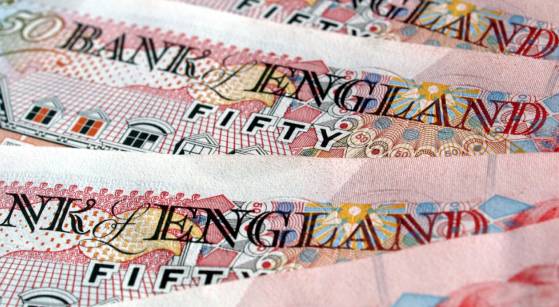Governments are deploying a ‘carrot and stick’ approach to manufacturers around the world in an effort to reduce carbon dioxide emissions. This has resulted in renewable electricity becoming more profitable than energy from fossil fuels.
This article, authored by Yu (Ben) Meng, Ph.D., Executive Vice President of Franklin Templeton and Anne Simpson, Franklin Templeton’s Global Head of Sustainability, was first published in Carbonomics: the path to net zero, OMFIF Sustainable Policy Institute Journal, Winter 2023.
If efforts to lower carbon dioxide emissions feel underwhelming to some, we see positive momentum worth celebrating.1 In market-based economies, profits are a strong motivator. Renewable electricity is now more profitable than energy from fossil fuels. These green profits didn’t happen by chance, however. Government incentives—both carrots, such as subsidies, and sticks, like carbon prices—helped redirect capital to make this happen.
Governments including Germany and China have long used carrots, such as loan guarantees and feed-in tariffs to kick-start solar photovoltaics (PV) production.2 In China, manufacturers received access to subsidized land, modern manufacturing infrastructure, special financing and tax cuts. In total, China’s industrial carrots helped scale up solar PV production 500 times between 2000–2016.3 Economists studying the mechanics of innovations find economies of scale, combined with learning-by-doing, play an outsized role in lowering costs and improving quality across clean-energy technologies.4
Look at the seismic shift in competitiveness of renewable electricity over fossil fuel options. From 2010–2021, the costs of solar PV electricity dropped 88%, which is now below the costs of fossil fuel electricity, as indicated in Exhibit 1.5 At these prices, solar PV is more profitable for power plants than coal or gas-fired electricity. It’s with an eye toward green profits that India’s largest power company is now committed to building 60 gigawatts of solar PV electricity by 2032.6
Renewables Costs Have Fallen Sharply
Exhibit 1: Global Weighted Average Levelized Cost of Electricity (US$ kWh)
2010–2021

International Renewable Energy Agency (IRENA), Our World in Data. As of December 6, 2022.
If carrots boost green profits, regulatory sticks like carbon prices offer a different, but complementary, way to tackle emissions. In theory, carbon markets are more efficient than government subsidies, which can drive overcapacity. The European Union (EU) operates the world’s largest and first major carbon market, followed by China’s carbon market launched in 2021.7 However, carbon prices are too low to redirect capital at the scale and speed we need. China’s carbon price is just US$8 per metric ton8 of carbon dioxide, far below the EU’s carbon price shown in Exhibit 2. That said, we’re less concerned for two reasons.
Carbon Pricing—Not So Taxing
Exhibit 2: Emissions Trading Systems in EU, New Zealand, China, and South Korea (converted to US$)
January 4, 2021–December 6, 2022 (Daily)

Source: Bloomberg.
First, China’s carbon pricing will help squeeze out inefficiencies from its coal-fired plants in the near term, before scaling up in the future. Second, the EU implemented a carbon border tax that will have positive ripple effects across the globe. Countries that trade regularly with the EU can either forfeit money at the border when selling high-carbon products or invest more at home in clean energy systems to avoid the tax. The EU’s carbon stick will incentivize trading partners to transition their economies quickly.
In terms of green energy carrots, the United States is deploying procurement contracts to double its solar power capacity in 10 years,9 plus generous subsidies to build green factories that create jobs with better wages. In turn, as the Paris agreement’s concept of the “just transition” gains momentum, we see new support for the shift to low carbon energy—so long as we ensure we put people at the center of the plans.10 We believe the power of green profits is unstoppable.
Endnotes
- Source: Dlouhy, J. and J. Ainger. “How a Flawed But Historic Climate Deal Emerged From COP Chaos,” Bloomberg, November 20, 2022.
- Source: Bose, S., Dong, G., and A. Simpson. “The Financial Ecosystem: The Role of Finance in Achieving Sustainability,” Palgrave MacMillan, 2019.
- Source: Mazzocco, I. “Cheap Solar (Part 1): How Globalization and Government Commercialized a Fledging Industry,” Macro Polo, January 14, 2021.
- Source: Nagy, B., Farmer, J., Bui, Q., and J. Trancik. “Statistical Basis for Predicting Technological Progress,” Plos One, February 28, 2013.
- Source: “Renewable Power Generation Costs in 2021,” International Renewable Energy Agency, July 13, 2021.
- Source: Bullard, N. “India’s Coal-Dominated Power Market Is Tilting Toward Solar,” Bloomberg, June 24, 2021.
- Source: Busch, C. “China’s Emission Trading System Will Be the World’s Biggest Climate Policy,” Forbes, April 18, 2022.
- A metric ton is equivalent to 1000 kg or 2204.6 lbs
- Source: Esposito, D. “Inflation Reduction Act Benefits: Clean Energy Tax Credits Could Double Deployment,” Forbes, August 23, 2022.
- Source: Eckhouse, B. “Green Factories Are Changing Minds in More Conservative US States,” Bloomberg, November 28, 2022.
WHAT ARE THE RISKS?
All investments involve risks, including possible loss of principal. The value of investments can go down as well as up, and investors may not get back the full amount invested. Stock prices fluctuate, sometimes rapidly and dramatically, due to factors affecting individual companies, particular industries or sectors, or general market conditions. Franklin Templeton and our Specialist Investment Managers have certain environmental, sustainability and governance (ESG) goals or capabilities; however, not all strategies are managed to “ESG” oriented objectives.
Source: Beyond ESG: Government incentives delivering green transition | Franklin Templeton











![Warsaw Stock Exchange: Brand24 (B24) - 1Q23 financial results Turbulent Q2'23 Results for [Company Name]: Strong Exports Offset Domestic Challenges](/uploads/articles/2022-FXMAG-COM/GPWA/gpw-s-analytical-coverage-support-programme-wse-2-6311cd4191809-2022-09-02-11-30-41-63175bda84812-2022-09-06-16-40-26.png)









![Warsaw Stock Exchange: Brand24 (B24) - 1Q23 financial results Turbulent Q2'23 Results for [Company Name]: Strong Exports Offset Domestic Challenges](https://www.fxmag.com/media/cache/article_small_filter/uploads/articles/2022-FXMAG-COM/GPWA/gpw-s-analytical-coverage-support-programme-wse-2-6311cd4191809-2022-09-02-11-30-41-63175bda84812-2022-09-06-16-40-26.png)


